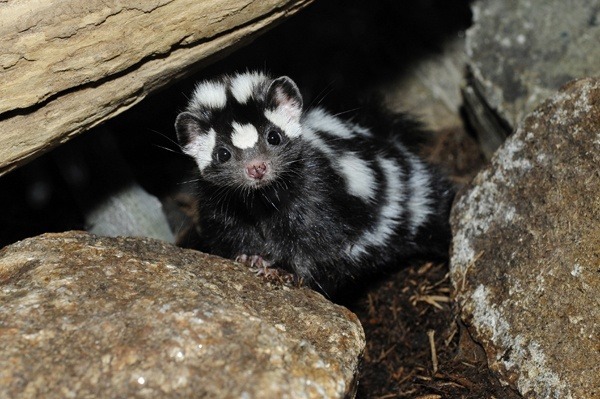Whether you’re driving down the road or walking through the woods, chances are you’ve experienced the unmistakable smell of a skunk. More likely than not, it probably came from the common and well-known striped skunk (Mephitis mephitis). Queue flashbacks to the old cartoon character, Pepé Le Pew.
But there’s a less common skunk found in Tennessee. It’s called the Eastern spotted skunk (Spilogale putorius) and it’s a species in greatest conservation need.
Eastern spotted skunks have glossy, black fur and are distinguished by white markings along its body.
Their diet mostly consists of insects and they often make their home in shrubby field borders and farmland.
When threatened, the skunks can spray up to 15 feet away. Eastern spotted skunks in particular are known to have a much stronger smell than their striped cousins so getting close is ill-advised.
Masters of blending in, spotted skunks are excellent at hiding from predators in dense understory cover and are naturally secretive–making it truly difficult to spot them in the wild.
The skunks were once common across the southeastern and midwestern United States, but over recent decades have experienced widespread population declines.
In addition to predators, the eastern spotted skunk faces habitat loss, and disease and has to compete with other sympatric mesocarnivore species.
Eastern spotted skunks play an important role in our ecosystem and help contribute to Tennessee’s unique biodiversity.
But the species faces a number of conservation challenges and needs support. Tennesseans can demonstrate their passion for wildlife by supporting Recovering America’s Wildlife Act.
This historic legislation would dedicate adequate funding and resources to help species like the eastern spotted skunk combat habitat loss and more.




